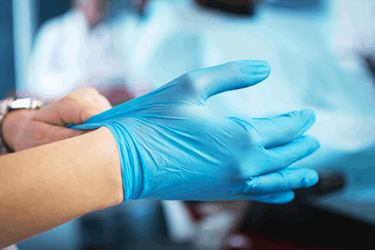Analysis Of Laboratory Nitrile Gloves: From Pores To The Surface

The humble rubber glove is usually the first line of protection for any person working with toxic, hazardous and contagious materials or environments. This is especially true in the ongoing COVID-19 virus pandemic. While everyone agrees on their universal use, very little attention is paid to the type of material, surface topography or pore size distribution of the glove itself. Here we describe an approach where the use of multiple techniques has enabled a complete physical characterization of the rubber glove material. This approach not only applies to nitrile gloves but can also be used for analysis of any rubber material, polymer coatings, thin elastomeric films, porous membranes or flat, flexible sheets.
In this study, we demonstrate a new, holistic way to characterize surfaces of flexible rubber materials like nitrile gloves using a nm to cm scale analysis approach. This approach makes use of multiple measurement techniques like gas physisoption (nm-scale), atomic force microscopy (AFM, μm-scale) and pycnometry for density measurement which affects the glove properties at the cm scale. This approach has the following benefits: a) provides a complete analysis picture of the material, b) demonstrates the use of multiple techniques (instruments) in the Anton Paar product portfolio and c) enables customers to use multiple techniques for getting a complete picture of the rubber glove surface.
Get unlimited access to:
Enter your credentials below to log in. Not yet a member of Pharmaceutical Online? Subscribe today.
